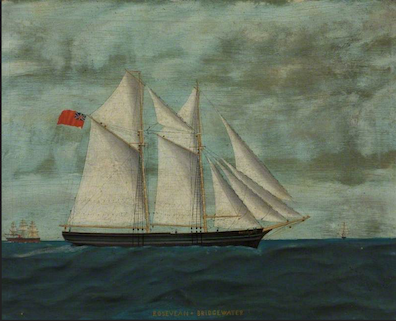
The south side of the South Wall at high tide. A ship is visible
in the distance, either coming into Dublin or leaving it via the
extended mouth of the River Liffey that lies to the left of the
rocks. Source: livetofivehundred.wordpress.com.

View east along the South Wall, looking out to the Poolbeg
lighthouse. The extension of the River Liffey formed by the wall
is to the left, and a ship is visible in Dublin Bay at the far
right. Source: livetofivehundred.wordpress.com.

2009 photograph by Donaldytong of the square-rigged ship Jeanie
Johnston moored in the River Liffey, with "her sails brailed up
on the crosstrees." Source: Wikimedia Commons.

The Rosevean, in a painting held in the Blake Museum in
Bridgwater, displayed courtesy of the Bridgwater Town Council.
Source: peterchrisp.blogspot.com.

A Colthurst, Symons, & Company brick manufactured in
Bridgwater. Source: peterchrisp.blogspot.com.